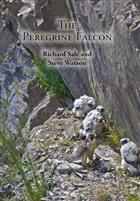The Peregrine Falcon
- Publisher : Snowfinch Publishing
- Illustrations : col + b/w photos, col + b/w illus
Our customers have not yet submitted a review for this title - click here to be the first to write a review
Description:
2nd edition. This comprehensive book on this most iconic bird of prey showcases innovative research and groundbreaking data that is revealing new aspects of their lives. The second edition is updated with additional research, including more insights into their sensory biology based on micro-CT scans of skulls.
Over the last five years, the urban population of Peregrines has increased dramatically. In part this was due to the increase in urban pigeon populations - where pigeons breed, Peregrines can flourish. But the human populations of towns and cities have also helped, providing potential breeding sites and installing video cameras so that urban folk can watch and admire the falcons. Renowned for their speed and flight abilities, a bird that once could only be seen in remote, wild places, became a star of local CCTV.
This updated book investigates all aspects of Peregrine life, from plumage, through diet, breeding and survival. The falcons breed on all continents apart from Antarctica and data has been collected from across that vast range. In addition, modern technology has been used to study the flights which have made the falcon famous as arguably the fastest creature on the planet. Allied to excellent photography the result is a comprehensive book on this most iconic bird.
For the second edition, all chapters have been revised with chapters 1 and 3 in particular featuring substantial revision and addition of new material. In chapter 1 the latest taxonomical research has been included to provide an updated picture of Falconiformes phylogenetics. Dissections and computer reconstructions have revealed more about the structure of the air sacs that are part of the respiratory system. Chapter 3 provides new data and discussion on the function and evolutionary origin of the Peregrine's tubercle (a cone-shaped structure in the nostril) and dispels some of the myths surrounding this structure. Additionally, results from micro-CT scanning reveal previously unseen details on bone thickness of limb and wing bones and on the internal anatomy of the nasal passage. Together with this anatomical data, results from behavioural experiments presented here strongly support the idea that peregrine falcons have a sense of olfaction they use in hunting. Finally, a notable addition to chapter 10 has been consideration of current and expected future impacts on Peregrine falcons of climate change.
You may also like...
The East Atlantic Flyway of Coastal Birds: 50 Years of Exciting Moments in
Prokosch, P. (Ed.)
Price £27.99
Identification Atlas of the Continental Birds of Southwestern Europe
2Blasco-Zumeta, J.; Heinze, G.-M.
Price £84.99
Field Guide to Birds of Greater Southern Africa
Barnes, K.; Stevenson, T.; Fanshawe, J.
Price £48.00
(Save £12.00)












